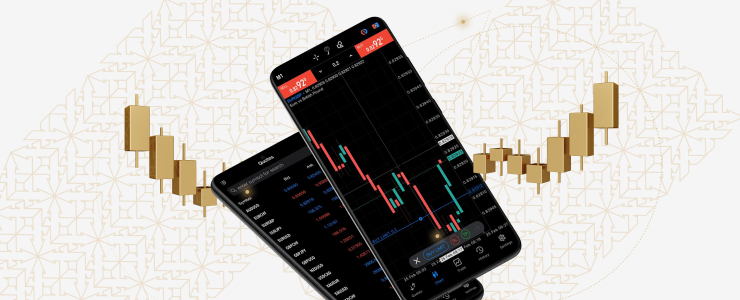Trading forex is not just about knowing what to trade but also about timing. An early or late entry or exit can turn out to be a losing opportunity. Timing is about learning the most appropriate time to enter and exit a trade so as to limit losses and increase the potential for generating revenue.
Read this article to get an understanding of clear, practical ways to master entry and exit points in forex trading as well as how to use technical and fundamental tools to enhance your timing.
Why are entry & exit points important?
In forex trading, your entry and exit price define if a trade is effective or not. A lot of traders are more into charts and setups. However, a few of them thoroughly consider where to get in or when to get out. A good trading idea can fail if you enter too late or exit too early. Half of trading growth comes from choosing the right entry and exit points. Even if you anticipate the correct market direction, poor timing can still lead to losses.
Of great importance are exit points. Some even believe that it is more important than entry points because that is where you win or lose money. Therefore, good timing isn’t just a plus, it is a key part of forex trading. Below, we will walk through the ways and trading styles you can use and practise.

Fundamentals vs technical timing
The forex market is driven by two big forces; fundamentals and technicals. The former includes news, economic data, central bank decisions while the latter is all about price, chart patterns and indicators. When combining both it usually results in good timing.
Regarding the fundamentals, you can expect volatility before big economic announcements like interest rate decisions or inflation reports, when prices might move sideways. Then, after data is released, a breakout can occur. Some traders place entry orders just outside the current range to catch the move once the news is released.
However, since markets move unexpectedly, timing should not only be based on news, as it can be risky. That’s why technical tools are used. Tools like indicators, trendlines, support or resistance zones and price patterns help identify the moment when the market is ready to move.
Predefining your entry and exit points before entering each trade is key in not letting the market surprise you.
5 effective forex entry techniques
Here are some entry methods you can test and adjust according to your trading needs and goals.
Breakouts
These are classic entry triggers with which you enter a trade when a price breaks above resistance in an uptrend or below support in a downtrend after having drawn key support and resistance levels. Many traders wait for a confirmation candle to close past the level with strong volume to confirm the move. Breakouts work best after the price has moved sideways for a while, building pressure. A rise in volume or momentum makes the signal stronger.
Pullback – retest forex entries
Some traders do not enter a trade right away on a breakout. Instead, they wait for the price to break, then pull back to test the level again. If the level holds, they enter in the breakout direction. This usually gives a better risk-to-reward.
Moving average crossovers
Traders use moving averages to find entry points. When a short-term average crosses over a longer-term one, it can be an indication of a change in a trend.
Trading with price action
Price action entries are based on simple chart patterns, such as pin bars. For example, a bullish engulfing candle forming near support after a downturn may signal the price is about to reverse. There are many traders that also search for additional confirmation, like alignment with the trend or multiple candlesticks before entering a trade.
Entry forex orders beyond current range
There are times when traders place orders just outside a price range in order to automatically enter when a breakout occurs, which helps in joining the move without chasing the market.

Exit forex strategies & methods to consider
Having gone through some ways to enter a trade, we will now look at ways to get out.
Predefined stop-loss & take-profit orders
Before entering a trade, set a stop-loss and a take-profit target. A take profit automatically closes a trade to secure gains, which helps you avoid making rash decisions and a stop loss closes a trade to prevent larger losses.
Protect profits while letting forex trades run
If the trade goes in your favour, a trailing stop can follow the price to lock in profits, and you can also take out part of your position while letting the rest run.
Time-based exits
You can set a time limit either for the trade or for a part of it. For instance, decide to exit after a trading session ends or after a specific number of bars to help control positions that aren’t moving as expected.
Recognise when momentum fades
When the trend or momentum starts to fade, you should exit the trade. If the price, for instance, fails to make a new high or low, or if an indicator diverges from price, it might suggest it is time to exit.
Exit when your trade logic no longer applies
Since each trade is based on some logic, either trend breakout or news, if the conditions that justified your trade do not apply any more, it is better to exit rather than hold on hoping. This might happen because of the price breaking the opposite direction or because of news changes and key level fails.
Tips to improve timing
To improve timing when trading, focus on periods with high market engagement such as the London-New York overlap, when volatility usually offers stronger entry and exit opportunities. Always confirm signals with market sentiment or trading volume so that you avoid false breakouts and be careful around big major news events as they can lead to sharp price fluctuations. You can also look back at your entry and exit points after each trade to see where you can improve.

Common forex mistakes to avoid
Many traders lose because they go after big moves, buying too high and selling too low. Others stay in the trade too long, hoping for extra profit or don’t follow their plan because they are afraid or greedy. You should avoid overleveraging because even small timing mistakes can be costly when there’s too much capital at risk.
Final thoughts
Mastering entry and exit timing is a hard job. It is about combining technical with fundamental knowledge, discipline and patience. You will not always get the perfect entry but if you use a structured approach your journey will probably be more effective.
You can start small and use a demo account. Also practice drawing levels, watch breakouts and improve exits. In the longer term, your timing will get better. As you build confidence, your trades become solid and your risk more controlled.
In forex trading, knowing when something might move and not only what might move is key.
Disclaimer: This information is not considered investment advice or an investment recommendation, but instead a marketing communication.




